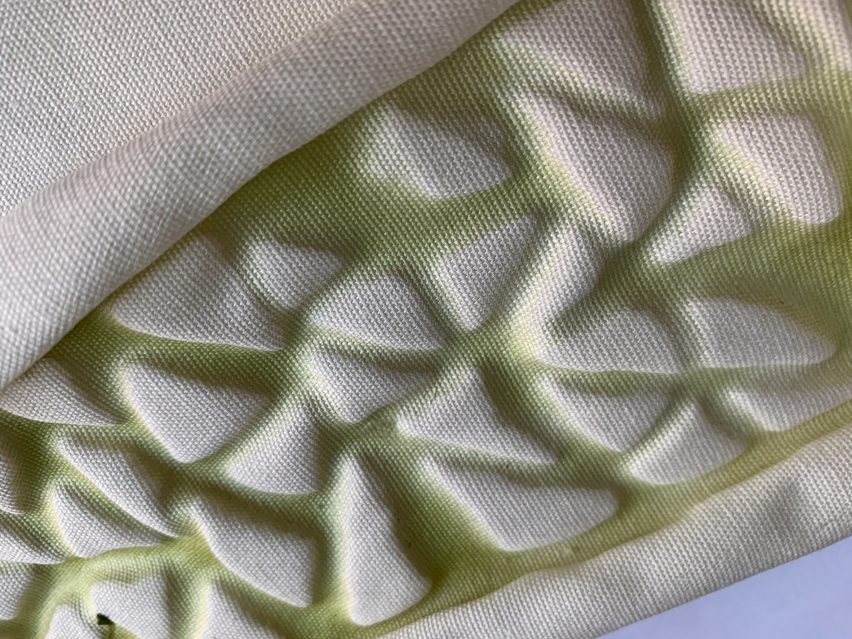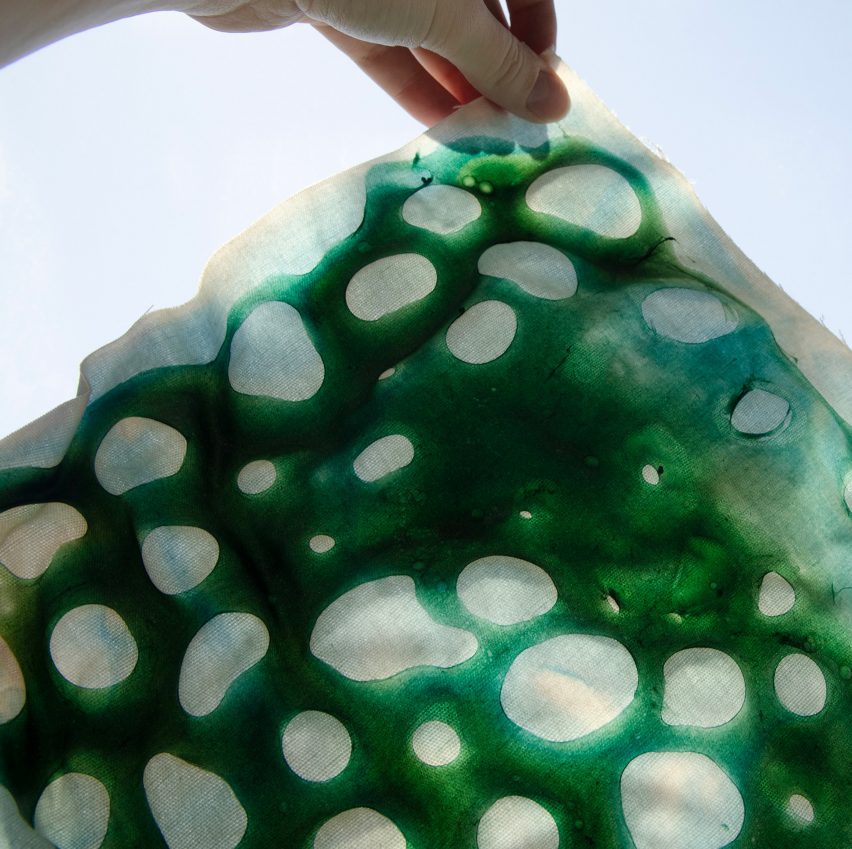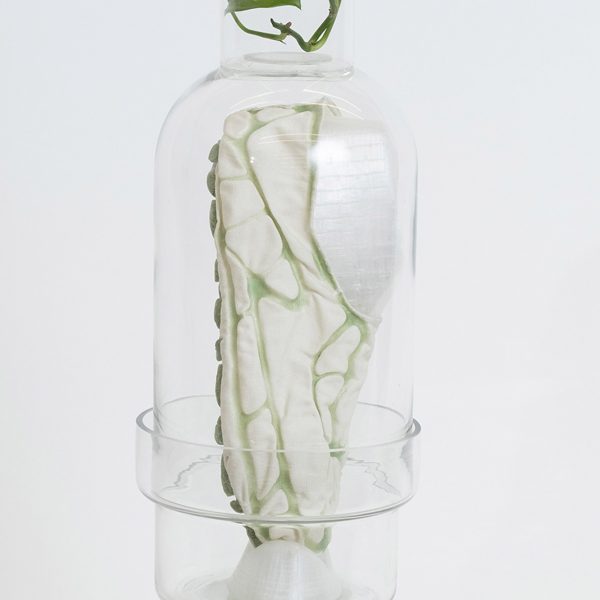Brooklyn-based designer Jessica Thies has developed a concept for a shoe that is printed with ink containing living algae capable of absorbing carbon dioxide from the atmosphere.
The project called Synthiesis is based on Thies’ research into engineered living materials that she believes could help the fashion industry reduce its environmental impact.
Thies’ shoes are constructed from a hemp fabric that is printed with a bio-based ink to which the designer added micro-algae cells. The process helps form the shape and structure of the shoe by producing an effect similar to smocking.
The addition of the algae to the printing ink transforms the shoes into what the designer called “active objects” as they act like living organisms.
“The benefit of adding living microalgae is they can photosynthesise to absorb carbon dioxide and could potentially be able to self-clean,” Thies told Dezeen.
To support the organisms the shoes would be fed nutrients and oxygen-producing cyanobacteria using a hydroponics system similar to those developed to irrigate plants.
Her research shows that the algae can remain alive on the shoe for up to four weeks without the supplementary nutrients, but should last longer if maintained correctly. Once the algae dies Thies has noticed that the chlorophyll colour it produces gradually fades.
The moulded soles are currently made using a polyurethane foam, but the designer hopes these could be produced from a bio-based and biodegradable material in the future.
Designed for her masters thesis at Parsons School of Design, the speculative project aims to highlight the ethical concerns arising from the increased use of engineered living materials.

In particular, Thies feels it is important to consider how humans will look after objects with living components. She proposes new rituals for these objects, similar to how we care for houseplants.
“I believe that if we simply replace synthetic materials with bio-based ones, we haven’t addressed the core issues of overconsumption and exploitation of the natural world,” she said.
“This work explores a new reality, where we have to consider the death of our objects in a more blatant way.”

Thies said she focused on footwear due to the challenges faced by this segment in mitigating its environmental impact. She pointed out that shoes require numerous components that aren’t always recyclable or biodegradable, leading to a large amount of waste.
The project also highlights the wider environmental issues surrounding bio-based materials, which could extend beyond the way we as humans use and interact with them.
“There is a risk that we will jump head first into creating materials with biotechnologies without considering all the potential implications,” said Thies. “This is especially true for living materials, as we could introduce a non-native type of algae or bacteria to a new environment and impact native species.”
She added that, unlike other living materials, which are typically denatured by the time they are converted into products, the need to keep objects alive will require a shift in human behaviour.
“I feel it is important for consumers to have a new awareness and connection with their manufactured objects and take accountability for their consumption habits,” she added. “This shoe helps build that awareness.”
The photography is courtesy of Jessica Thies.

